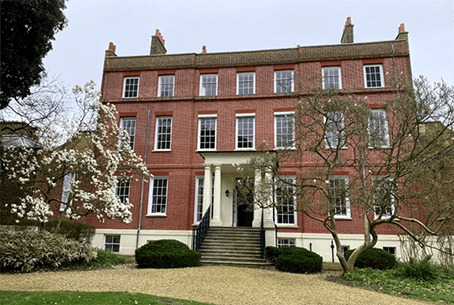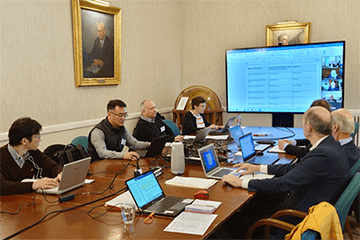ISO standards play a crucial role in surface metrology by establishing internationally recognized norms for measurement techniques, terminology, and specifications.
Digital Surf’s senior surface metrology expert François Blateyron, new convener of working group WG16, shares insights on current projects and looks ahead to future advancements in the field of surface texture.
A strong involvement in standardization
For many years now, Digital Surf has been providing Mountains® software to major instrument manufacturers. These large companies delegate their analysis software to us, and they naturally expect Mountains® to be compliant, accurate and efficient. It’s a big responsibility. And that’s why, for over 20 years, we have been actively present in standardization committees in France, Europe and at ISO.
Initially, our participation was a way to better understand future standards, connect with experts and ensure that our implementations were correct. But we quickly became contributors ourselves to the development of standards, sharing our experience in the development of correct and optimized algorithms.
Being able to understand the implementation of parameters, filters or form fitting algorithms gives us a unique insight on standards and we can provide feedback to help draft better definitions and explanations.
As an active member of working groups WG15 (filtration) and WG16 (surface texture) groups within technical committee TC213, we contribute to better standards for the future of metrology. We also contribute to the dissemination of knowledge and best practices, among our users and partners, through the Mountains® reference guide and the free online Surface Metrology Guide.
A new convener
During the last ISO TC213 meeting, in March 2024, hosted by the National Physical Laboratory (NPL) in Teddington near London, I had the privilege and the pleasure of assuming for the first time the role of convener of working group WG16. Hélène Cros of the UNM (Union de Normalisation de la Mécanique), was present as the group’s new secretary.
Since its creation in 2003, and until September 2023, WG16 has had only one convener, John Westberg, from Sweden. John did a great job leading the group through the development of two major series of standards: ISO 25178, the first standard on areal surface texture and ISO 21920, the new profile standard.
The group’s work will continue with the help of dedicated experts: academics, manufacturers and users. Numerous documents are currently in development or in revision, driven by project leaders who are specialists in their domain. The main challenge for the group convener is to ensure that these contributions are consistent and compatible with existing documents.

Bushy House in Teddington, London, built in the 18th century and occupied by the National Physical Laboratory (NPL) since 1902.
Current work
Within WG16, I recently led the revision of ISO 25178-2, published in 2021, which corrected a few mistakes from the 2012 edition, clarified several concepts and definitions and added a few new parameters. I’m now working on the revision of ISO 25178-3 on specification operators, with the aim of modernizing the document which is currently too close to the old profile standards from the 1990s. Areal surface texture specification requires new ideas and cannot be just an extension of existing practices from profile surface texture. On the verification side, metrologists need to understand and interpret areal specifications, and be given clear guidance to verify them using areal optical profilers.
Another group of documents currently under revision are those on surface texture instruments. Parts 601 to 607 have been updated to implement the latest concepts described in part 600.
These documents will be published in late 2024 and 2025. Same thing for the classification document (part 6) on which revision has also started.

Above. The first meeting of ISO TC213 WG16 led by François Blateyron, in March 2024 at Teddington (UK).
Future work
Besides the regular revision of existing documents, several topics need to be addressed in the future. The ISO 16610 series, developed within WG15, is missing several filters for surfaces, such as morphological filters.
Another important topic for the future is the drafting of the basis of surface metrology on triangle meshes (called Shells in Mountains®). This new type of surface analysis will see significant growth in the future, pushed by applications in additive manufacturing and advances in instrumentation capable of measuring 3D surfaces. Filters, form fitting and parameters must be adapted to triangle meshes using new mathematics and new algorithms.
The next meetings of ISO TC213 will be hosted in September 2024 at the European Spalliation Source, in Lund, Sweden.
Author : François Blateyron
Resources :
- What are the differences between ISO 4287 and ISO 21920? – www.youtube.com/watch?v=Oox81vg-xxQ
- Revision of ISO 25178: guide.digitalsurf.com/en/guide-iso-25178-revision.html
- What is the GPS matrix? guide.digitalsurf.com/en/guide-gps-matrix.html
- Surface texture on freeform surfaces: guide.digitalsurf.com/en/guide-freeform.html